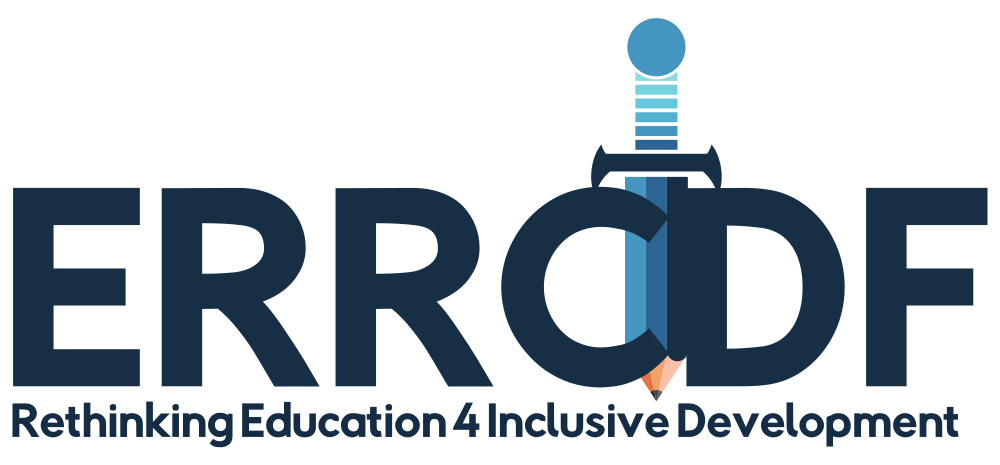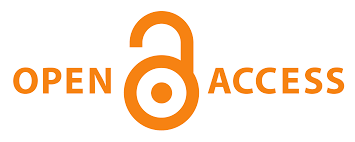Quality Curriculum Implementation and Improvement for Global Competitiveness: An Assessment of Science Teachers’ Creative skills
Keywords:
Science Teachers, Creative thinking skill, Qualification, Year of Experience, Curriculum implementationAbstract
Creativity, a part of the Nature of Science, plays a key role in scientific knowledge development. Scientific Knowledge and skills connote the heartbeat of science teaching. Creative strategies and activities are therefore essential for adequate science curriculum implementation. This study examined science teachers’ creative thinking skills in Ondo state, Nigeria. It also investigated demographic variables influencing this skill. Five research questions were raised and answered. Descriptive research design of the survey type was employed. One hundred and seventy Science Teachers were randomly selected as sample. The “How creative are you” test was validated, and the reliability index yielded 0.83. Findings revealed that Science teachers’ creative thinking skills were fair and not satisfactory for global competitiveness. Gender, year of experience, qualification and teaching subject did not influence teachers’ creative thinking. The findings imply that teachers with fair creative thinking skills in the science classroom may garnish their lessons with less creative strategies and activities that may prompt students’ interest and possibly result in better performance. It was recommended that sensitization should be made on the relationship between creativity and science teaching and the need for science teachers to be more creative in their approach to teaching. Furthermore, Science teachers should be willing to try out innovative approaches regardless of their gender, year of experience, qualification and teaching subjects.
References
Ahmad, R., Khan, S., & Rehman, S. (2015). Comparative study to investigate the sense of teacher efficacy between male and female teachers. Asian Journal of Management Sciences and Education, 4(2), 29-35.
Agharuwhe A. A. & Ugborugbo, N. M. (2017). An Examination of Gender’s Influence on Teachers’ Productivity in Secondary Schools. Journal of Social Sciences, 17(3), 185-191. https://doi.org/10.1080/09718923.2008.11892650
Akinsolu, A.O. (2010). Teachers and students’ academic performance in Nigerian secondary Schools: Implications for planning. Florida Journal of Educational Administration and Policy, 3(2), 86-103.
Aruan, S.A., Okere, M. O. & Wachanga, S. (2016). Influence of Culture and Gender on Secondary School Students’ Scientific Creativity in Biology Education in Turkana County, Kenya. Journal of Education and Practice, 7(35), 25-35.
Badmus, O.T & Omosewo, E.O. (2018). Improving Science Education in Nigeria: The Role of Key Stakeholders. European Journal of Health and Biology Education, 7(1), em2
Bak?r. S, & Öztekin, E. (2014). Creative thinking levels of preservice Science Teachers In terms of different Variables. Journal of Baltic Science Education, 13(2), 231-242.
Cenberci, S. (2018). The Investigation of the Creative Thinking Tendency of Prospective Mathematics Teachers in Terms of Different Variables. Journal of Education and Training Studies, 6(9), 78-85. https://doi.org/10.11114/jets.v6i9.3434
Clotfelter, C., Ladd, H., & Vigdor, J., (2007). How and why do Teacher credentials matter for Student Achievement? https://www.nber.org/system/files/working_papers/w12828/w12828.pdf
Ezenwosu, S. U., & Nworgu, L. N. (2013). Efficacy of peer tutoring and gender on students’ achievement in biology. International Journal of Scientific & Engineering Research, 4(12), 944.
Fautley, M. & Savage, J. (2007). Creativity in Secondary Education. Exeter: Learning Matters Lda.
Hanushek, E. A. (2006). School resources. Handbook of the Economics of Education, 2, 865-908.
Harden, R.M., & Crosby, J.R. (2000). AMEE education guide no. 20: The good teacher is more than a lecturer the twelve roles of the teacher. Medical Teacher, 22(4), 334-347.
Isleyen, T., & Kucuk, B. (2013). Examining prospective teachers? level of creative thinking in terms of different variables. Mustafa Kemal University Journal of Social Sciences Institute, 10(21), 199-208.
Khodabakhshzadeh, H., Hosseinnia, M., Moghadam, H. A., & Ahmadi, F. (2018). EFL Teachers’ creativity and their teaching's effectiveness: A Structural Equation Modelling Approach. International Journal of Instruction, 11(1), 227-238. https://doi.org/10.12973/iji.2018.11116a
Lederman, N. G., Abd-El-Khalick, F., Bell, R. L., & Schwartz, R. S. (2002). Views of nature of science questionnaire: Toward valid and meaningful assessment of learners’ conceptions of nature of science. Journal of Research in Science Teaching, 39(6), 497-521. https://doi.org/10.1002/tea.10034
National Research Council (2015). Guide to Implementing the Next Generation Science Standards. Committee on Guidance on Implementing the Next Generation Science Standards. Board on Science Education, Division of Behavioral and Social Sciences and Education, Washington, DC: The National Academies Press
National Science Teachers Association (NSTA). (2000). NSTA position statement: The nature of science. Available online: . Retrieved June, 2018.
Oyewole, B. K., Arogundade, B. B. & Sadiku, B. O. (2019). Work Environment and Provision of Instructional Facilities as Correlates of Academic Staff Job Performance in Nigerian Universities. Journal of Education Research and Rural Community Development, 1(1), 46-57.
Özgenel, M. (2018). Modeling the relationships between school administrators’ creative and critical thinking dispo¬sitions with decision making styles and problem solving skills. Educational Sciences: Theory & Practice, 18, 673–700. http:// dx.doi.org/10.12738/estp.2018.3.0068
Sawyer, R. K. (2010). Learning for creativity. In R. A. Beghetto & J.C. Kaufman (Eds.), Nurturing creativity in the classroom (pp 172-190). New York, Ny: Cambridge University press.
Schmidt, A. L. (2011). Creativity in science: Tensions between perception and practice. Creative Education, 2(05), 435. https://doi.org/10.4236/ce.2011.25063.
Sibel. D K. (2015). A Situat?onal Study for the Identificat?on of Pre-Service Science Teachers’ Creat?ve Thinking and Creat?ve Scient?f?c Think?ng Skills. Journal of Education and Practice, 6(27), 27-41.
Sungur (1997). Self-Assessment of creative Thinking. In Sibel, D. K. (2015). A situational study for the identification of Pre-service Science Teachers’creative thinking and creative scientific thinking skills. Journal of Education and practice, 6 (27), 111-130.
Downloads
Published
How to Cite
Issue
Section
License
Copyright (c) 2019 Grace Titilope Babafemi, Adekemi Oreoluwa Adewumi, Timilehin Ifedayo Falade

This work is licensed under a Creative Commons Attribution-NonCommercial-NoDerivatives 4.0 International License.










